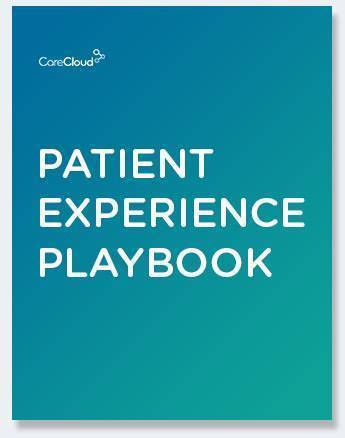Today’s patients are approaching healthcare with consumer expectations, demanding modern, frictionless experiences from intake to payment and follow-up. Smartphones have only been the catalyst for this change, and we’re seeing this expectation shift in all demographic segments, not just Millennials, as many expect.
This is the second entry in a series examining how medical groups are appealing to patients as consumers. The first post introduced the concept of patient experience management (PXM), an emerging category that represents the sum of all experiences a patient has within their healthcare journey, with intention to create more convenience for patients, staff, and providers. This post continues that exploration with a look at the four stages of PXM strategies.
Reinventing Healthcare in a Digitally-First World
Like any business strategy, patient experience management will evolve over time as a flexible framework that is capable of taking advantage of new technology and new patient desires to give patients what they want.
It will not be something that is implemented overnight or in a week. Rather, PXM will be a strategic investment requiring careful watering and feeding. But, over time the dividends will add up to greater convenience for both the patient and the practice by offering greater efficiency, easier access, personalization, and long-term deeper automation of workflows and data.
By embracing the concept of patient experience management rather than simply point solutions for patient engagement, healthcare organizations will eventually find themselves in a position to reinvent what a physical healthcare location is and should be in the future. This is not a far-flung pipedream either, it will be a crucial necessity in the era of population and value-based contracts when treating social determinants will matter as much for physicians as treating illness.
The 4 Stages of PXM Strategies
Since PXM is an emerging category, practices need to figure out what works for them individually – both from a patient demand perspective and a resource capability. But, they will need to establish a roadmap for adding patient experience tools intelligently over time. We believe PXM strategies can be implemented across 4 levels of sophistication, based on how they deliver convenience to both patients and medical practices.
 The Stages of Patient Experience Management (PXM)
The Stages of Patient Experience Management (PXM)
Most practices today probably have a variety of Stage I systems in place. Chances are, managing all of these single point solutions doesn’t create efficiencies or ROI for the practice, since it takes a lot of time to manage the different dashboards and siloed systems. Without a positive ROI in Stage I, these practices struggle to move through Stage II with success. Instead of delivering convenience for staff and patients, point solutions are creating frustration.
In establishing a three-year roadmap for navigating these four stages, practices need to assess where they are and where they need to go, with time to properly train staff, roll out new capabilities to patients and communicate the value of them. However, without a platform to manage all of these new tools and capabilities from a single dashboard, neither patients nor practices will experience the return on investments made.
PXM Requires a Powerful, Open Platform
Having unconnected, point solutions for things like digital check-in, scheduling, payments, loyalty campaigns, educational materials, and so on only leads to practices having additional systems to manage and log into. Worst of all, individual systems can often lead to patients needing to remember and manage multiple profiles across different sites and apps.
Convenience, at its fundamental level, is about the reduction and eventual elimination of hassles, extra steps, waiting in line, or relying on faxes and paper to convey information. By adopting numerous point solutions in an effort to provide a modern patient experience, practices will not produce convenience unless that is a platform that is ready to support all the activities that patients do and want to do in a connected fashion.
Insight
You only need one platform, but both it and the solutions that are plugged into it need to have at their core an open, cloud-based architecture – otherwise the ability to deliver convenience is severely constrained
Insight: You only need one platform, but both it and the solutions that are plugged into it need to have at their core an open, cloud-based architecture – otherwise the ability to deliver convenience is severely constrained
In simplest forms, a platform is just a technological foundation that allows users to continuously add new features and improvements with as little effort as possible. Think of setting up your Stage I foundation, then adding in more features to take you along the spectrum, allowing users to integrate an ever-widening universe of data, capabilities, and solutions when the time is right. All from a single, familiar interface. Think of a smartphone (the platform) and the apps (the features added over time) as a similar analogy.
A foundational platform can allow practices of any size to become agile, flexible and nimble to adapt to consumer trends and abrupt changes in the market. By deploying a platform approach to PXM, practices will create the ability for other applications to easily connect their services to the practice, build products and services on top of it, share data, and co-create value. It’s a plug-and-play approach that allows you to future-proof your technology investments.
Next up in this PXM series — a look at the simple steps to getting your PXM strategy right, with real-life examples from medical practices who have successfully migrated along the stages of PXM. Download this whitepaper, Patient Experience Management: Defining a New Healthcare IT Category, for some food for thought on building your own PXM strategy.

Download the Patient Experience Playbook


